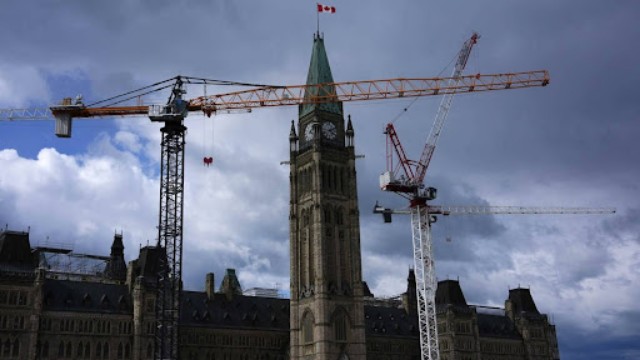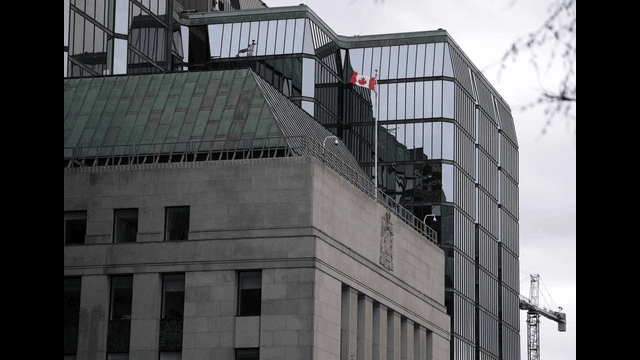
The Peace Tower on Parliament Hill in Ottawa is visible behind construction cranes on Sunday, May 25, 2025. (Photo: Justin Tang / The Canadian Press)
Canada pulled in over $1 billion from import duties in March alone — a sharp increase of $617 million compared to the same month last year. The sudden rise comes after the Canadian government imposed retaliatory tariffs on U.S. goods, answering trade restrictions set by Washington.
According to the federal government's latest fiscal monitor report, the extra cash came mainly from Canadian businesses importing American products now facing additional charges. These counter-tariffs were introduced in March, aimed at balancing the trade tensions between the two countries.
Earlier this year, the Liberal government pledged to respond firmly if the U.S. tightened trade policies against Canada. Their plan involved slapping tariffs on American goods entering the country — a move now proving financially significant. During the recent federal election campaign, the Liberals estimated these counter-tariffs would bring in up to $20 billion over a full year.
Finance Minister François-Philippe Champagne addressed the media last week, explaining that the $20 billion figure was only an early estimate. He stressed that the tariff landscape is changing quickly and that any forecasts made before might shift as events unfold.
For now, the government has decided not to present a full spring budget, choosing instead to release a fiscal update this coming fall. This pause leaves many wondering how this unexpected revenue boost will be used, or whether it signals further economic action down the road.
These tariffs, though helpful to the federal purse, may lead to increased costs for Canadian businesses that rely on American imports. Retailers, manufacturers, and distributors now face higher expenses that could trickle down to consumers. Still, Ottawa views this as a necessary step to protect Canadian industries and workers from unfair trade treatment.
The spike in import duty collection clearly shows how international tensions can have direct and quick effects on national finances. While the political tug-of-war between Canada and the U.S. continues, Canadians can expect more updates on how their government plans to handle the financial and economic shifts in the months ahead.















